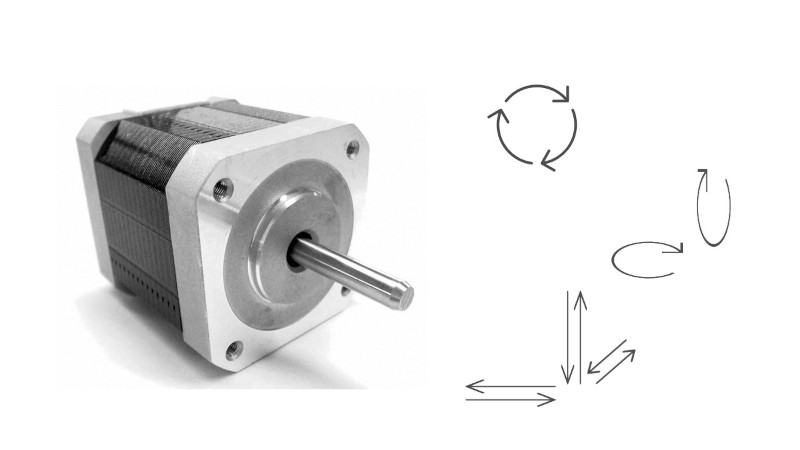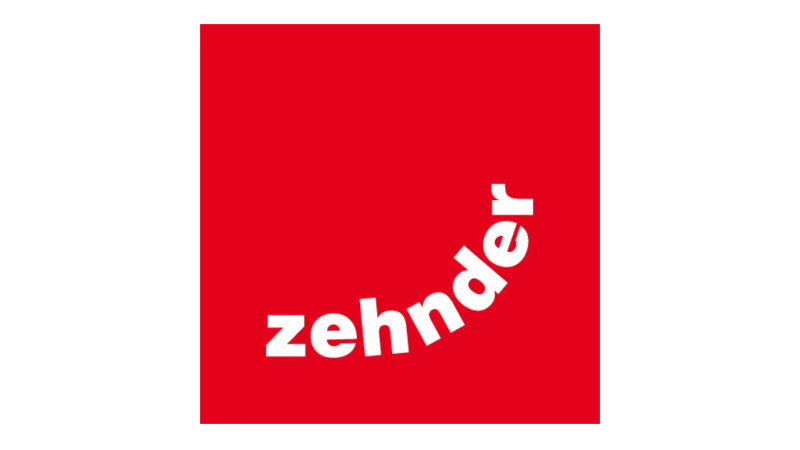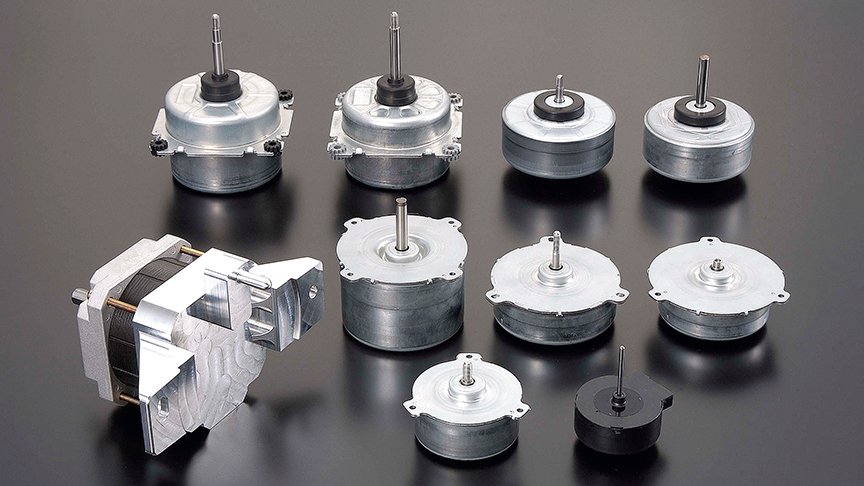Satisfying the needs behind new regulatory trends – BLDC motors for decentralised ventilation fans
-
Life environment
-
Home appliance
-
Residential ventilation unit
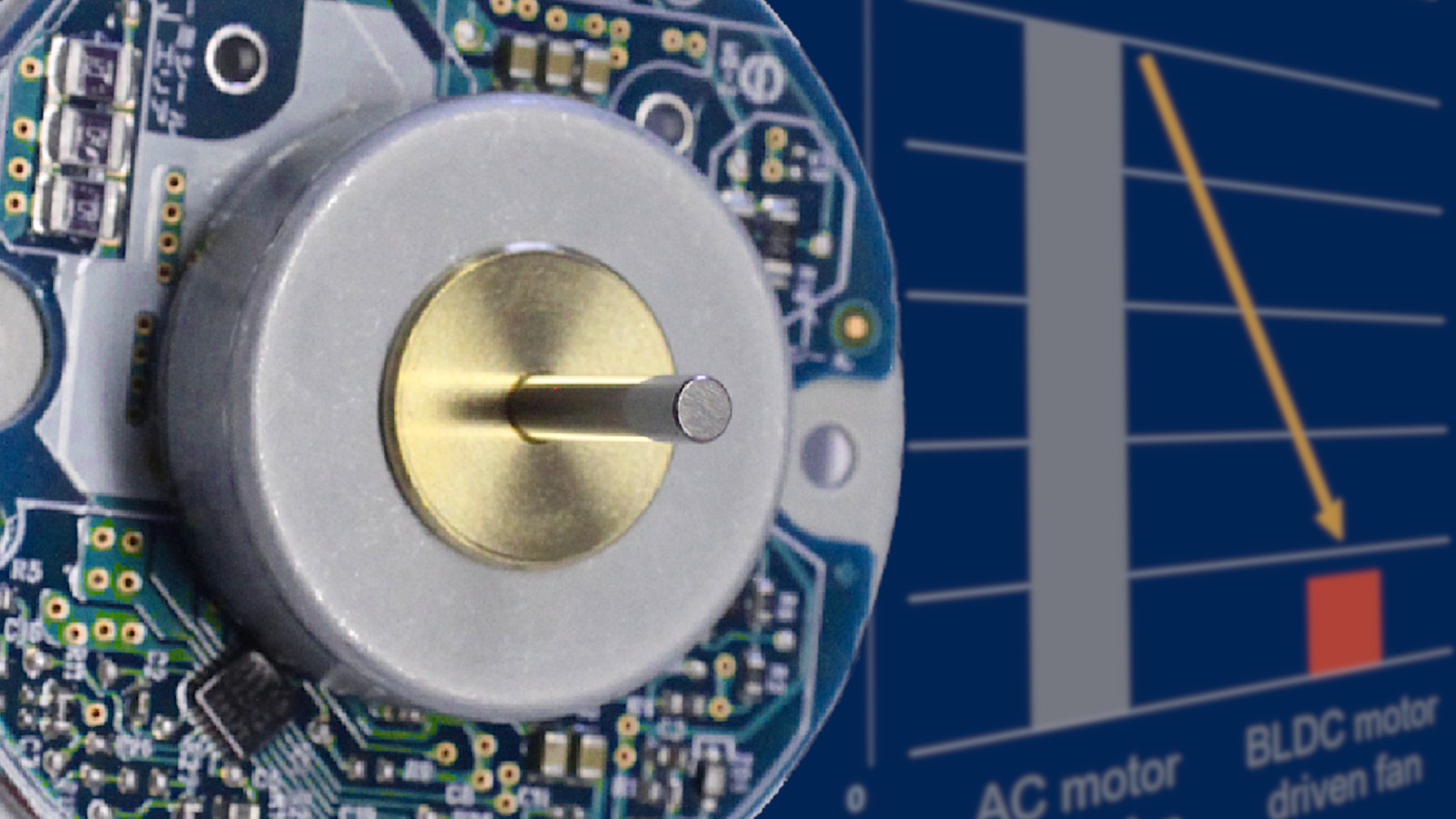
Replacing AC motors with brushless DC motors can save up to 80% power consumption and meet new building regulations
What is the best motor to comply with world leading energy efficiency standards?
ASPINA’s goal was to meet the latest needs of decentralised ventilation manufactures in the British market.
In response to the continuing global threat of climate change and environmental degradation caused by global warming, the EU set a goal of net-zero emissions of greenhouse gases by 2050. In the United Kingdom, energy efficiency standards (The Future Homes Standard) are being revised in stages to achieve the government's target of net-zero emissions by 2050 and in January 2021, the "Building Regulations: Approved Documents L, F and Overheating" was announced.
Our idea was to replace the AC motors with a brushless DC (BLDC) motor to achieve a significant increase in power efficiency. Fans driven by BLDC motors have the potential to save up to 80% of power consumption, compared to fans driven by AC motor.
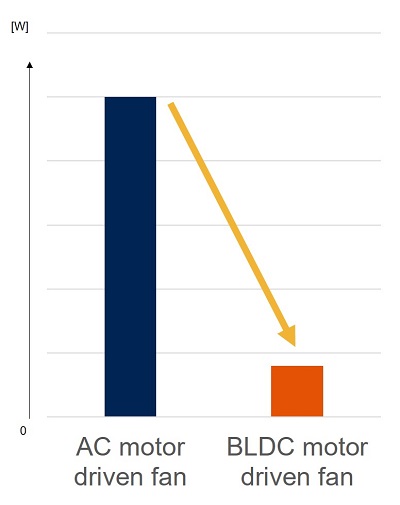 Power consumption comparison between BLDC motor and AC motor driven fans
Power consumption comparison between BLDC motor and AC motor driven fans
ASPINA develops a three-phase BLDC motor with less than a quarter of motor vibration than single phase BLDC motors
The latest revisions to the U.K. Building Regulations aim to improve the building insulation and airtightness, in order to maintain a healthy living environment.
For kitchen and bathroom ventilation the following points must be taken into account:
- The air needs to be exhausted at high pressures from houses that have improved airtightness.
- For more freedom in design of the living spaces in the future, exhaust air ducts are to be adapted more individually to the structure of the building (resulting in ducts that are longer and have more curves).
- The ventilation system needs its power performance to counteract the back pressure of the outside air.
- It is necessary to reduce the power consumption not only by ventilation but also by heating and cooling, humidity control, etc.
In order to meet the new standards and deal with the associated changes, it was necessary to bring motor torque and rotation speed of decentralised ventilation fans to a higher level. Besides that, outstanding energy efficiency has to be achieved at the same time. ASPINA’s development team took on the challenge and started to develop a BLDC motor suitable to power a regulation compliant decentralised ventilation fan for homes.
There are two typical types of BLDC motors used in many applications: single-phase BLDC motors and three-phase BLDC motors. Single-phase BLDC motors use two coils, while three-phase BLDC motors use three coils (U, V, W). Single-phase BLDC motors have fewer slots and therefore fewer number of times of switching per rotation than three-phase BLDC motors. This results in more coil oscillations occurring at each switching. Consequently, single-phase BLDC motors are not stable at high rotation speeds and motor vibration can increase. We concluded the single-phase BLDC motor would not be suitable for “new standard decentralised ventilation fans” that require high motor rotation speed to counteract the high back pressure and longer exhaust ducts. Accordingly, we decided to develop a three-phase BLDC motor, which has more slots, higher number of switching per rotation, and therefore less motor vibration at high rotation speeds.
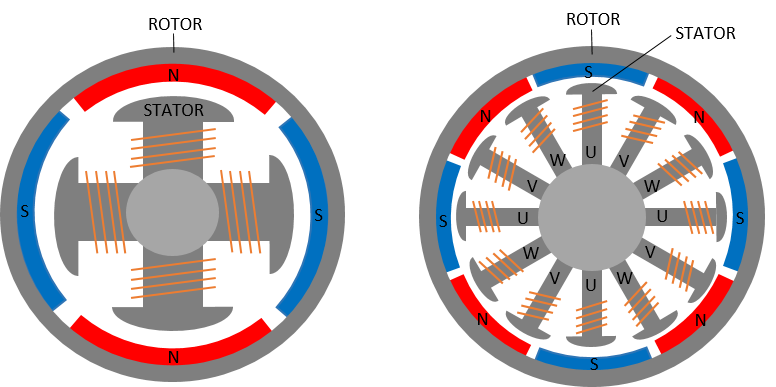 From the left: single-phase 4 pole BLDC motor and three-phase 12 pole BLDC motor
From the left: single-phase 4 pole BLDC motor and three-phase 12 pole BLDC motor
In order to achieve even lower vibration and power efficiency, ASPINA decided to use sinusoidal drive for the motor in development. There are two types of motor drive systems: sinusoidal drive and rectangular wave drive. Compared with the rectangular wave drive, which varies the coil voltage in a rectangular wave, the sinusoidal drive, which varies the coil voltage in a sinusoidal wave, allows a smoother rotation. For this reason, motors using sinusoidal drive have a lower motor vibration and noise level than those using the rectangular wave drive, and at the same time have higher energy efficiency.
 Waveform at sinusoidal drive
Waveform at sinusoidal drive
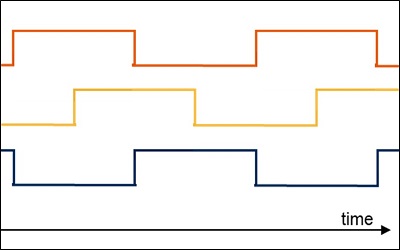 Waveform at rectangular wave drive
Waveform at rectangular wave drive
The sinusoidal drive is PWM-controlled and can change the rotation speed linearly. This means that not only can a myriad of rotation speeds be set, but also that the entire fan can be made quieter by avoiding its resonant rotation speed in the program of the fan.
With the new developed sinusoidal drive three-phase BLDC motor, ASPINA conducted a vibration acceleration test in comparison with a single-phase BLDC motor from an existing decentralised ventilation fan in the market. The difference was evident. ASPINA’s sinusoidal drive three-phase BLDC motor had 60% less motor vibration at 1,500 r/min, compared to the single-phase motor; more than enough to comply with the high requirements of the revised standards.
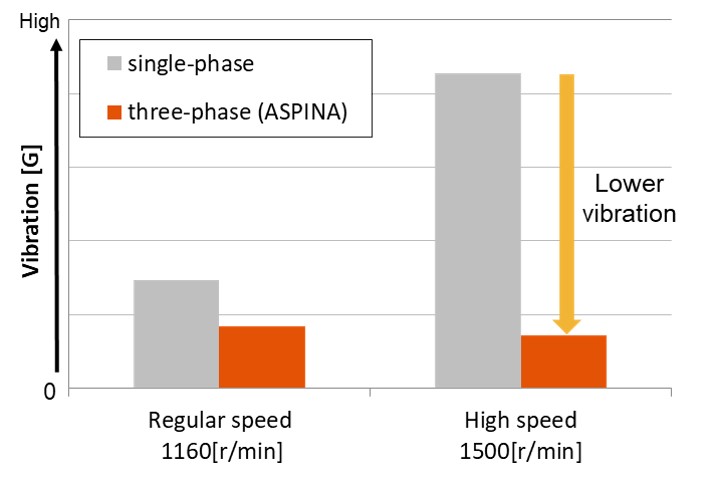 Vibration comparison between single-phase and three-phase BLDC motors
Vibration comparison between single-phase and three-phase BLDC motors
ASPINA's new motors shorten the development time of decentralised ventilation fan manufacturers
Developing a new product, or replacing a part of a current product model takes a lot of time and effort. When using a three-phase BLDC motor in place of an AC motor or single-phase BLDC motor, you would need to design a new drive circuit, which would take a considerate amount of time. However, review of the energy efficiency standards continues to progress, and market demands for efficient products are rising. The timely development of a regulation compliant decentralised ventilation fan for homes is crucial for manufacturers.
When developing the three-phase BLDC motor for decentralised ventilation fans, ASPINA’s marketing team chose three-phase BLDC motors from the existing line-up DR-29312 and DR-24312 and customized these motors so that they have a built-in drive circuit, thus eliminating the need for manufacturers to develop one from scratch. These new motors with a built-in drive circuit use sinusoidal drive, which enables low vibration and low acoustic sound even at high rotation speeds.
ASPINA’s marketing team works to understand the true needs of manufacturer and consumer demands when developing our motor products. When developing the three-phase BLDC motor for decentralised ventilation fans, it was important to know that the motor would need to rotate at higher speeds than current products, not just improved energy efficiency. This knowledge was crucial for a quiet, low vibration product. Shorter time period of development is also a big factor when dealing with regulation compliance. The quick customization of our existing motor line-up was made possible with ASPINA’s more than 50 years of experience and know-how of motor & driver development and customization.
ASPINA continues to work with decentralised ventilation fan manufacturers for environment friendly fan products
The consultation on "Building Regulations: Approved Documents L, F and Overheating" has been closed in April 2021, and is aimed for implementation during the same year. The revision of these standards play an important role in providing a pathway for buildings fit for the future, and to reach the net zero emissions target by 2050. This target being one of the most ambitious in the world, it is essential that all associated products comply with these regulations.
ASPINA’s three-phase BLDC motors for decentralised ventilation fans have been developed with energy efficiency and performance levels that would be able to comply with the latest standards even should they be revised further in the future. We share the same goal as our customers, and will continue to support your journey to develop environment friendly products that meet the highest standards in the world.
Exhibition information
-
10 Oct. 2025









